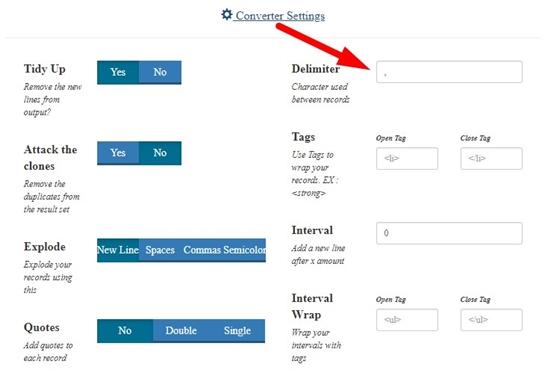In the realm of golf instruction, few figures have made as significant an impact as Greg Norman. His approach to teaching the game transcends traditional methodologies, incorporating a deep understanding of biomechanical principles that inform the mechanics of the golf swing. By focusing on body mechanics and the optimal generation of force, Norman’s techniques not only enhance swing efficiency but also cultivate a heightened level of technical precision among his students. This examination delves into the specific biomechanical insights underlying Norman’s instructional strategies, revealing how these concepts can be effectively harnessed to improve performance on the course. Through a rigorous analysis of his methods, this article aims to elucidate the ways in which an awareness of biomechanics can lead to more effective learning and mastery of golf for both novice and experienced players alike.
Biomechanical Foundations of Greg Norman’s Swing Techniques
The intricate biomechanics of Greg Norman’s swing techniques provide valuable insights into optimizing performance on the golf course.Central to Norman’s methodology is the concept of **kinetic linking**, where the efficient transfer of energy occurs through a coordinated sequence of body movements. Strong engagement of the **core muscles** and a stable lower body serve as the foundation, promoting an effective **torsional twist** in the upper body during the backswing. This critical interplay not only enhances power generation but also fosters balance and control throughout the swing.
Moreover, the execution of **force generation** plays a pivotal role in Norman’s approach. By utilizing the **ground reaction forces**, golfers can create more significant acceleration at impact. The following elements underscore the effectiveness of this technique:
- Footwork: The placement of the feet and their engagement with the ground enable a solid base for force application.
- Weight Transfer: A smooth transition of weight from the back foot to the front foot maximizes club speed.
- Follow-through: An extended follow-through ensures that all generated forces are harnessed effectively,maintaining swing integrity.
Additionally, understanding body alignment and its influence on swing mechanics is crucial in Norman’s teachings. Proper alignment not only aids in achieving a more consistent ball flight but also helps in reducing the risk of injury. the following table highlights the key biomechanical aspects in Norman’s swing:
| Biomechanical Aspect | Impact on Swing |
|---|---|
| core Stability | Enhances control and precision |
| Hip Rotation | Facilitates maximum power transfer |
| arm Extension | Improves clubface control at impact |
| Follow-through Alignment | Ensures consistent swing path |
Force Generation and Its Impact on Swing Efficiency
Central to Greg Norman’s instructional beliefs is the understanding that effective force generation plays a pivotal role in the efficiency of a golfer’s swing. By harnessing the principles of biomechanics, golfers can cultivate a more powerful and fluid swing that minimizes energy expenditure while maximizing output. Norman emphasizes the importance of utilizing the body’s large muscle groups—specifically, the legs, core, and shoulders—to create a kinetic chain that drives both speed and accuracy.
Key elements of force generation include:
- Ground Reaction Forces: Engaging with the ground effectively enables a golfer to generate additional upward and lateral forces, which translate into swing power.
- Rotational Dynamics: Achieving optimal rotation of the hips and shoulders not only enhances speed but improves the golfer’s ability to maintain control throughout the swing.
- Timing: Synchronization of body movements is essential, as it ensures that energy transfers seamlessly from the lower body through the upper body and into the club.
The biomechanics of force generation are best illustrated through an analysis of swing segments. The following table showcases how each phase contributes to overall swing efficiency by translating potential energy into kinetic energy:
| Phase | Energy Contribution | Biomechanical Affect |
|---|---|---|
| Setup | potential | Establishes balance and alignment |
| Backswing | Stored | Creates tension and prepares for power generation |
| Downswing | Kinetic | Transforms stored energy into club speed |
| Follow-Through | Residual | Maintains control and balances weight distribution |
Through meticulous attention to force generation, norman’s approach not only aims to improve drive distance but also the precision of ball striking. By integrating these biomechanical insights, golfers can transcend traditional limitations, achieving a level of swing proficiency that is both powerful and consistent, ultimately enhancing their overall performance on the course.
The Role of Body Alignment in Enhancing Golf Precision
Effective body alignment serves as a cornerstone in enhancing the precision of a golfer’s swing. When a player positions their body correctly, it creates a stable foundation that allows for consistent movements throughout the swing. This alignment not only streamlines the transfer of energy from the lower body to the upper body, but it also optimizes the path of the clubhead, thereby reducing unwanted variable trajectories. Ideally, the golfer shoudl aim for a neutral spine angle, ensuring that the shoulders and hips are aligned parallel to the target line.
Common biomechanical errors that arise from poor alignment include excessive lateral movement and improper rotational dynamics. These mistakes can lead to inconsistent contact with the ball, resulting in loss of distance and accuracy. To combat these inefficiencies, golfers can focus on key elements such as:
- Foot position: Ensuring that the feet are shoulder-width apart and aligned with the target enhances stability.
- Hip and shoulder alignment: Keeping the hips and shoulders aligned with the target reduces needless strain and maximizes energy transfer.
- Head position: Maintaining a steady head during the swing aids in visual consistency, allowing for better ball tracking.
Instrumenting drills that emphasize body alignment can significantly improve swing precision. For instance, using a mirror can help golfers visually assess their posture and alignment during practice. Additionally, incorporating feedback mechanisms, such as video analysis, allows players to detect discrepancies in their stance and make necessary adjustments. Table 1 below illustrates some of the key drills that can be employed to enhance body alignment:
| Drill Name | Description |
|---|---|
| Alignment Stick Drill | Utilizes alignment sticks to set target lines for feet and shoulders. |
| Mirror Drill | Incorporates a mirror to self-evaluate body positioning. |
| Weighted Club Swing | Enhances muscle memory for proper alignment and swing path. |
By prioritizing body alignment, golfers can not only enhance their swing precision but also build a solid foundation for overall performance improvement. Understanding and implementing these biomechanical principles allows athletes to experience a more powerful and efficient swing, leading to improved scores and greater enjoyment of the game.
developing a Cohesive Mechanism for Club Control
Incorporating a well-coordinated kinetic sequence is essential for enhancing club control throughout the swing. Greg Norman’s teaching emphasizes a harmonious relationship between the upper and lower body,allowing for **efficient force transfer**. By engaging the **core muscles**, golfers can stabilize their body while maximizing the contribution of their limbs during the swing. This interconnectedness is crucial, as it enables a more fluid motion, reducing unnecessary tension and promoting better rhythm.
Furthermore, the **grip and wrist mechanics** are pivotal to achieving precision in club control. According to Norman, a golfer’s grip should facilitate a natural wrist hinge, which aids in maintaining the correct clubface angle. Ensuring that the hands work in conjunction with the arms allows for effective lag in the downswing,ultimately leading to enhanced ball striking. The alignment of the clubface with the path of the swing is largely influenced by these wrist movements, necessitating a keen focus on grip pressure and angle.
To better illustrate the aspects of club control, consider the following table that categorizes key elements of **body mechanics, grip, and swing path**:
| Element | Description | Impact on Control |
|---|---|---|
| Body Mechanics | Engaging core for stability | Diminishes lateral movement, enhancing accuracy |
| Grip Technique | Natural wrist hinge | Improves clubface alignment at impact |
| Swing Path | Fluid transition from backswing to downswing | Increases consistency in ball flight |
This approach emphasizes that mastering club control is not simply about individual components but also about understanding how they interrelate. A holistic view of these biomechanical principles fosters an integral swing mechanism, guiding golfers towards improved performance and consistency on the course. By practicing these core principles, aspiring golfers can develop a more coherent understanding of their swing, ultimately leading to more successful outcomes in their game.
Practical Application of Biomechanical Principles in Golf Training
Understanding and applying biomechanical principles in golf training can significantly enhance a golfer’s performance on the course.One critical aspect is **force generation**, which involves the efficient transfer of energy through the kinetic chain—from the ground up to the clubface. To implement this in practice, golfers can focus on the following methods:
- Ground Reaction Forces: Utilize the ground to create stable footing during the swing.
- Body Rotation: Ensure proper hip and torso rotation to enhance swing speed.
- Weight Transfer: Practice shifting weight effectively from back to front foot.
Another vital biomechanical concept is **swing efficiency**, which relates to the optimal use of body mechanics to minimize unnecessary movements. Implementing drills that emphasize the following can greatly improve a golfer’s swing:
- one-Piece Takeaway: Encourage a smooth start by keeping arms and body connected.
- Follow-Through Mechanics: Focus on maintaining balance and posture throughout the swing’s conclusion.
- Video Analysis: Utilize video technology to analyze swing dynamics and correct inefficiencies.
To further illustrate these concepts, a simple comparison of traditional versus biomechanically optimized techniques can be valuable. The table below succinctly summarizes key differentiators between these approaches:
| Aspect | Traditional Technique | Biomechanically Optimized Technique |
|---|---|---|
| Energy Usage | Primarily upper body | Integrated whole-body movement |
| Posture | Static stance | Dynamically balanced throughout |
| swing Fluidity | Rigid motions | Smooth, continuous motion |
the biomechanical principles embedded in greg norman’s golf instruction offer a profound understanding of the intricacies of an efficient swing. By focusing on optimal body mechanics and effective force generation, Norman’s techniques not only enhance swing efficiency but also promote technical precision that is vital for aspiring golfers at every level. As golfers seek to refine their skills, incorporating these biomechanical insights can lead to substantial improvements in performance. Future research may delve deeper into the application of these principles, further bridging the gap between biomechanics and practical instruction in the sport. This extensive approach not only serves to elevate individual performance but also contributes to the broader understanding of the physical demands of golf, paving the way for more informed coaching methodologies.





